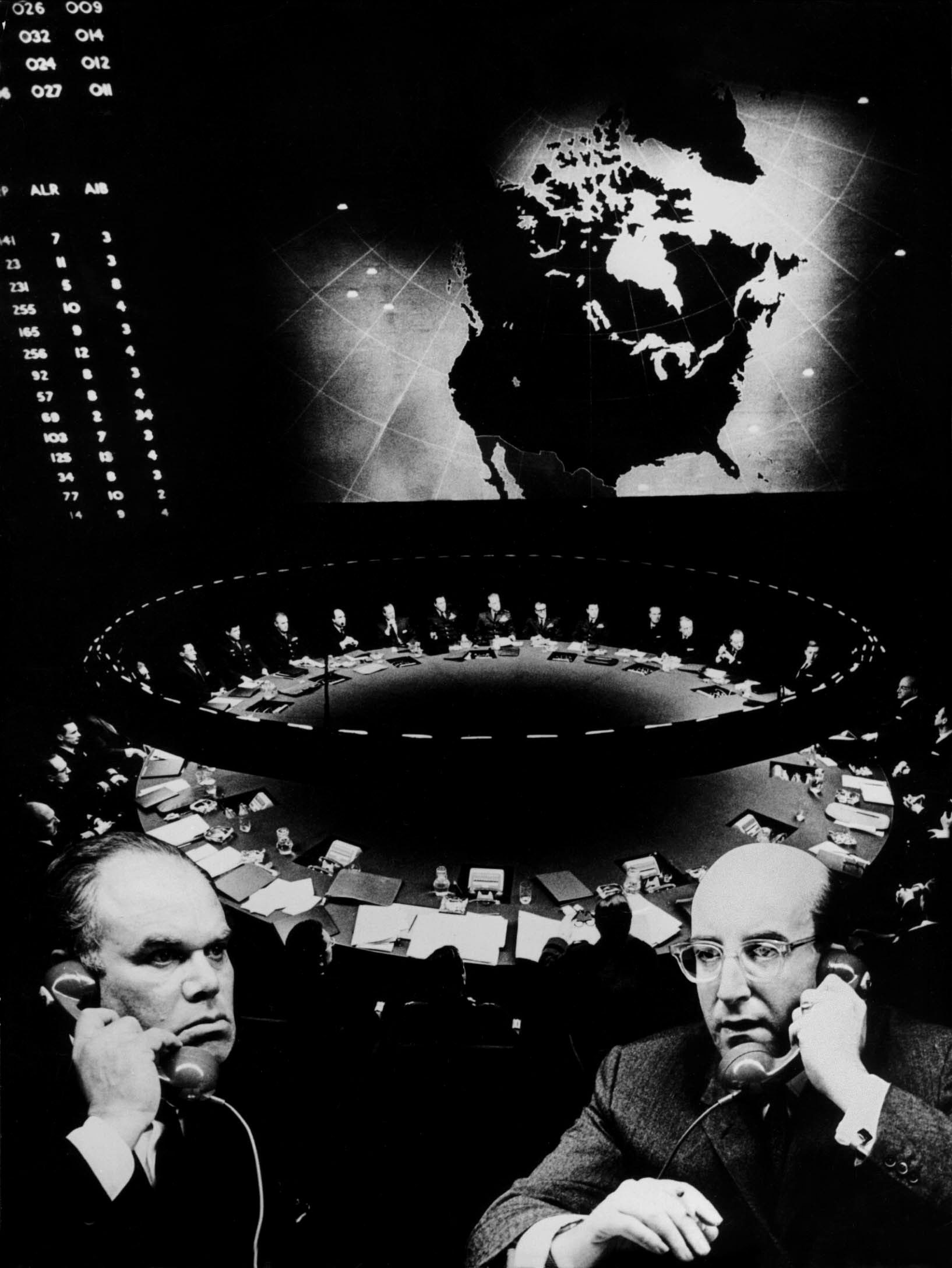Dr. Strangelove is one of the most famous dark comedies in motion-picture history. The film deals with the destruction of humankind through nuclear war. However, the movie explores this serious theme through savage satire and broad comedy. Dr. Strangelove was subtitled How I Learned to Stop Worrying and Love the Bomb. The director was Stanley Kubrick, who was also the coauthor of the screenplay with American screenwriter Terry Southern and English novelist Peter George. The movie was released in 1964 and was based on George’s novel Red Alert (1958).

In Dr. Strangelove, the English actor Peter Sellers played three major roles—the president of the United States, a mad German scientist, and an English air force officer. The story is actually a series of loosely connected comic scenes that lead up to an insane American general’s launching of a nuclear bomb against the Soviet Union. Sterling Hayden played the general, and George C. Scott portrayed another American general. Other actors in the movie included Peter Bull, James Earl Jones, Slim Pickens, Tracy Reed, and Keenan Wynn.
Dr. Strangelove appeared during a time when many people feared that a nuclear war between the United States and the Soviet Union might occur. The film is a comedy, but it showed how an unstable person in authority could trigger such a war. The movie ends with a famous scene of U.S. aircraft commander Major T. J. “King” Kong (Pickens) happily riding a nuclear bomb like a bucking bronco as it plummets toward the Soviet Union in an attack that would probably lead to the end of life on Earth. The motion picture becomes a comic morality tale about how humanity could destroy itself by the inability to control its own technology.
See also Kubrick, Stanley ; Sellers, Peter .
